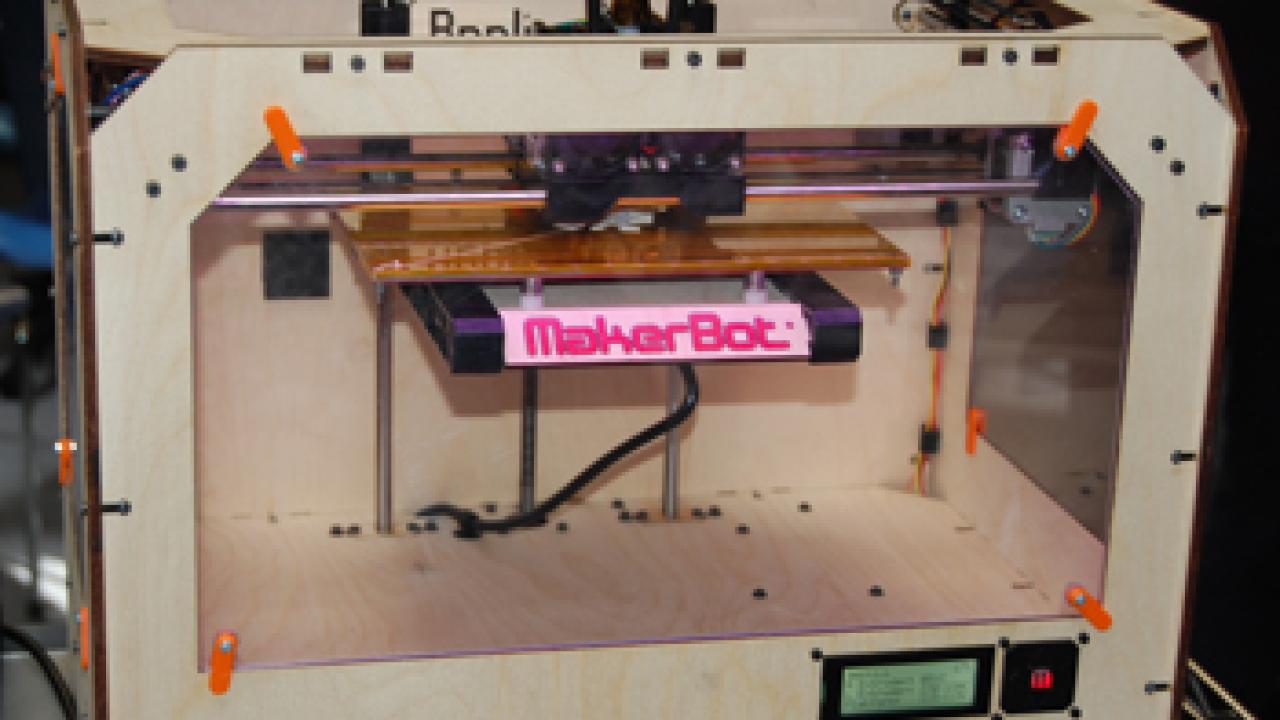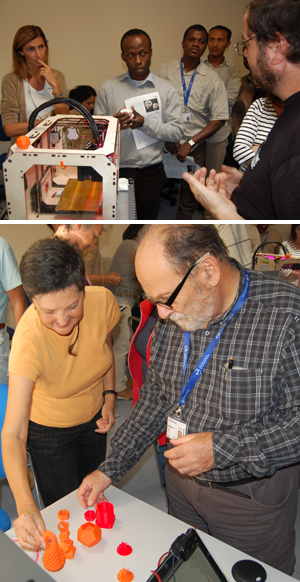
With a name like "replicator", one might imagine that the odd,
box-shaped device sitting in ICTP's Science Dissemination Unit's
(SDU) laboratory was a low-tech version of the matter converters
used by the intrepid crew of the Starship Enterprise.
However, reaching that part of the technological universe may take
a few more years. The "replicator " at ICTP is a
three-dimensional printer that can make solid objects out of
plastic. Using a digital model, the printer creates the objects
layer by layer with a molten liquid plastic.
At a seminar today (24 October), SDU's Carlo Fonda introduced this
new technology to the ICTP community. SDU has created the
innovative, low-cost EyA automated recording system for classrooms,
so it follows that they would be interested in new technologies
that could enhance science education.
 After presenting an
overview of the development and costs of 3-D printers (they are
getting cheaper, which is good news for early adopters who may want
to purchase one of their own), Fonda talked about the uses, which
range from art to prosthetics to humanitarian projects in the
developing world. "Students can print out molecules to discover
their complex structures," explained Fonda.
After presenting an
overview of the development and costs of 3-D printers (they are
getting cheaper, which is good news for early adopters who may want
to purchase one of their own), Fonda talked about the uses, which
range from art to prosthetics to humanitarian projects in the
developing world. "Students can print out molecules to discover
their complex structures," explained Fonda.
Fonda believes that 3-D printing has the capability to popularize
and democratize science. "I would like to bring a 3-D printer to
Africa," said Fonda, who has travelled extensively through the
continent to teach hands-on courses on wireless networking and
other topics.
For a video of today's demonstration, please see ictp.tv.
Photos at right: In top photo, Carlo Fonda (right) demonstrates a 3-D printer. Below, seminar attendees admire 3-D printer sample objects.
















